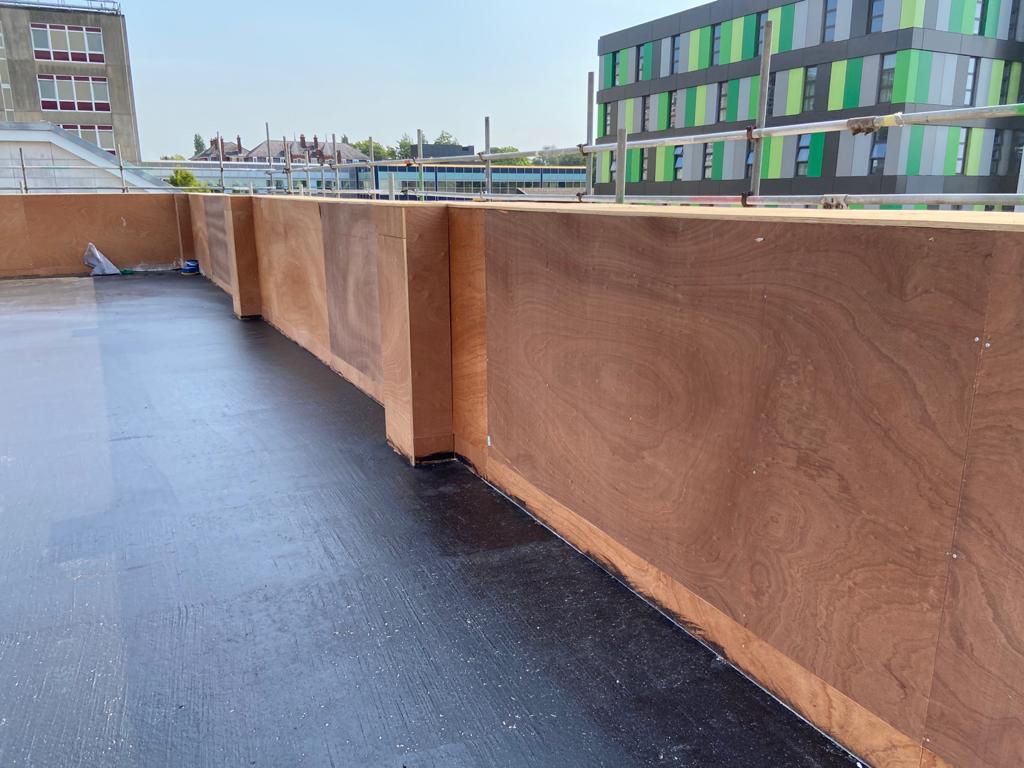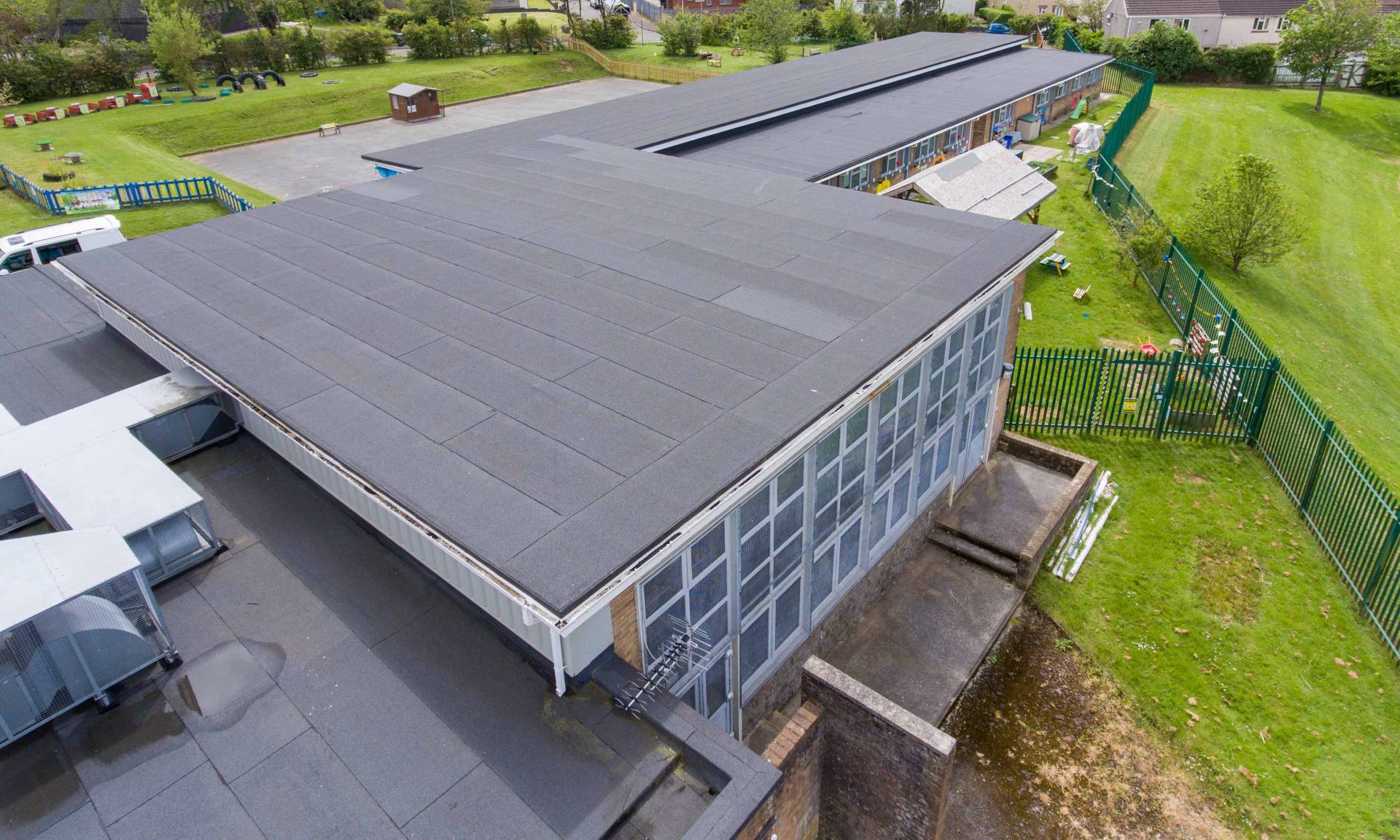Mitigating fire risk on campus with flame-free roofing systems
Garland UK Technical Manager, John Broadbent, takes a closer look at why the education sector is making a move to use flame-free roofing systems in their roofing refurbishments and capital works projects.
Site safety is one of the primary considerations when it comes to construction and refurbishment and in recent years we have seen flame-free roofing systems become an increasingly important solution to modern flat roofing requirements, playing a significant role in improving safety within the education sector and mitigating the danger of roof fires during construction.
Due to the sensitivities of many education, healthcare and emergency service sites, more often than not, a strict zero-flame policy is in place to protect the safety of the building and, most importantly, the safety of the occupants during construction.
What is a Flame-Free Roofing System?
Thanks to the advancement of construction material innovation and application techniques, flame-free roofing systems have been proven to meaningfully reduce the risk of fire during roof construction projects, including refurbishment, replacement or new-build works.
Using self-adhesive modified bitumen membranes combined with hot air welding, cold-applied liquid coatings; or a combination of both, flame-free systems achieve the same durability and robust waterproofing benefits as traditional torch-on solutions, without the need for a naked flame.
With the consideration of health and safety being paramount in the education sector, there is now more than ever an increased demand for flame-free systems to be used as a standalone system, completely removing the requirement to use a naked flame during installation, or in conjunction with traditional torch-on systems to detail areas that are at high risk of combustion.
Utilising flame-free roofing solutions not only eliminates any risk of fire from hot works but also ensures that school buildings can remain fully operational throughout the installation process, causing minimal disruption during the critical term time for students.
Fire Risks in Construction
It goes without saying that the risk of fire during roof construction can be high, if not properly mitigated. The risk is predominately due to the need to perform what is known as hot works, which BS 9999:2017 defines as “any procedure that might involve or have the potential to generate sufficient heat, sparks or flame to cause a fire”.
The hot works associated with roof construction are cutting, grinding, welding, bitumen boilers and gas torches for torch-on membranes installation and drying substrates before applying waterproofing materials.
Last year, hot works accounted for approximately one-fifth of construction-related fires. Between 2013 and 2014, there was one fire per month on commercial buildings during roof construction, where the majority of these were caused by the use of gas torches whilst drying the roof substrate.
Construction (Design and management) Regulations (CDM) 2015
CDM (2015) is an overarching health and safety legislation that define the roles and legal responsibilities for everyone involved with any part of a building project. To raise awareness for schools and contractors legal duty, CDM regulations outline the specific duties on building owners, specifiers and roofing contractors to take into account.
As designated CDM (2015) designers, Garland UK Technical Managers are on hand to offer informed advice to the education sector. After completing a complimentary detailed consultation and site visit we can help:
- Specify the appropriate design for the roof build-up, taking into account the building use
- Provide core samples and moisture content analysis.
- Provide detailed existing site surveys, containing a photographic record.
- Clearly identify high-risk areas.

NFRC Safe2Torch
In July 2017, the National Federation of Roofing Contractors (NFRC) introduced the Safe2Torch scheme, intending to reduce the risk of roof fires in the flat roofing industry caused by the use of gas torches. Developed in partnership with contractors and manufacturer members of the NFRC, the below key principles were agreed to set the foundation for safer construction and reduce the risk of roof fires.
Safety through design
Those who create risks have a responsibility to manage those risks. Therefore, it is essential to make sure all fire risks are identified by your contractor and CDM designer at the survey stage, so their mitigation can be incorporated into the design from the inception of the project.
Safety Through Responsible Specifications
Any high-risk areas across your education site must be identified to ensure that a suitable flame-free alternative is specified in those areas. Importantly, where it is impossible to determine the make-up of the roof, Safe2Torch treats these areas as high-risk by default and it is only if demonstrable that an area is safe, can torch-on applications be used on your roofing project.
Safety Through Application
Installation contractors have as much a responsibility as designers in making the construction process as safe as possible. Before roof works commence on your site, it is essential for contractors to perform their risk assessments and continually as work proceeds, as risks that were unknown during the design stage may reveal themselves during the construction process.
If you are overseeing the installation of a roofing project, it is important to be aware of the flame-free exclusion zones on your education site as these dictate areas where only flame-free roofing materials can be used. In these zones, flame-free roofing products may be used, extending 900mm from any combustible material or high-risk details.
If there is any doubt, the general rule of thumb is that flame-free solutions must be used by default.
When to Consider Flame-Free
Roof refurbishment works are often examined closely by local authorities, building owners and regulatory bodies, given the high risk nature of traditional hot-works waterproofing systems. With the use of flame-free systems, you can reduce the time delays in getting your project off the ground and minimise any increase in insurance costs, whilst mitigating the risk of fire on your site.
Garland UK’s highly skilled Technical Managers are on hand to help. With their wealth of expertise, they will be able to assess the viability of your roof to incorporate our diverse range of flame-free systems and find the right bespoke solution for even the most complicated roofs.
At Garland UK, we help schools, colleges and universities to design out risk and specify flame-free systems wherever possible on their roofing and building envelope projects, before protecting the investment with a market leading 25 year Single-Point Guarantee.


